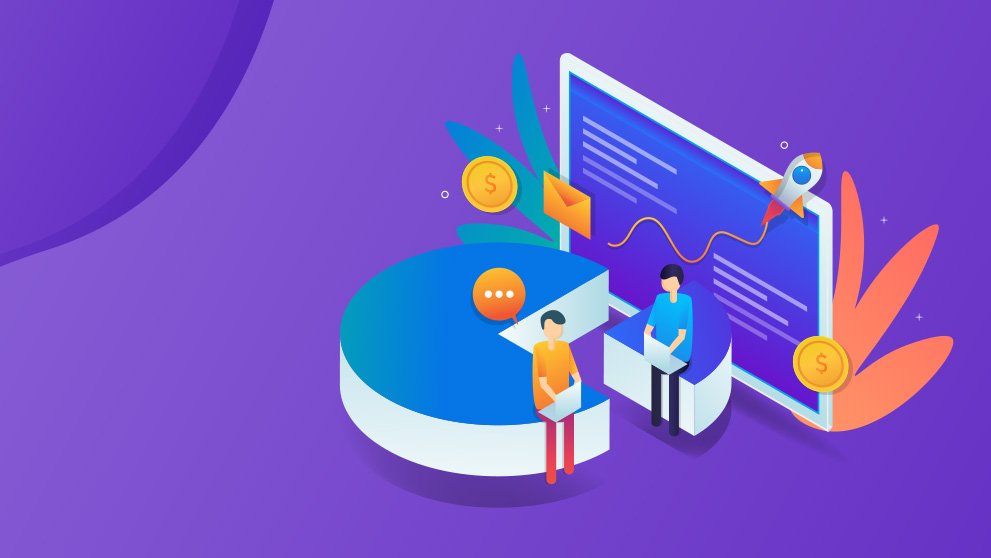The customer’s journey isn’t over once they click “buy”. Your post-sales engagement with your customers will influence whether they come back to your online store again. So, what should you be considering to get it right? Read on for our essential roundup.
According to research by SignalMind1, the likelihood of a new customer making a purchase is between 5-20%, but the probability of an existing customer doing so is around 60-80% – a pretty big gap, we’re sure you can agree. SignalMind also adds that 80% of your future profits will likely come from 20% of your existing customers – so, it definitely pays to do all you can to ensure customer retention. But how?
Four steps to success
Remember that your customers’ journey is not over once they click “buy”. There are four separate stages to consider: the immediate communication, delivery, unboxing and following up. Get them right and you’re more likely to be looking at a repeat sale. Get them wrong (or ignore them) and you might lose yourself a valuable customer.
Communicating quickly and efficiently
As soon as your customer clicks the buy button, your after-sales communication should kick in. Yet, according to a recent survey2, 93% of e-commerce companies end their communication with customers immediately after checkout, which means a big opportunity for you to gain a competitive edge.
A confirmation email for your customers with a receipt for their records should be the bare minimum. Within the email, thank them for their custom, reassure them that their order is in good hands, and invite them to come back again soon. Make it clear how to get in touch should they need to, and reiterate the delivery timeframe you quoted at purchase.
Here's a quick checklist to use as inspiration:
- A greeting in your brand’s tone of voice
- Their name (to give it a personal touch)
- A short message to say thanks for ordering
- Their order number
- Confirmation of the tracking details
- An estimated delivery date
- Contact and/or live chat details for any queries
- Suggestions of other products they might like from your store
- A discount code for future purchases
Don’t neglect the email’s subject line – that’s what’ll encourage people to open it, after all. Here are some tips from Shopify3:
- Personalization is key: it leads to 20% higher open rates
- Emails that contain the word “you” in the subject line have 5% higher open rates than those without
- Stick to 30 or fewer characters, as they have the highest open rates
Getting the delivery right
The delivery is what your customers will remember, so you better get it right:
Speed
Fast delivery should be a high priority for your business. 25% of customers won’t consider buying a product from an online retailer if it isn’t shipped in 2 days or less4. You should be offering next-day delivery as standard; even better to include a same-day option.
Convenience & flexibility
Are you allowing customers to choose a delivery time slot? And giving them the option to have the package left with a neighbor or another address? And what about Buy Online Pickup in Store? Nobody wants to have to stay in and wait for a package, so offering at least some of these options is a must.
Free shipping
According to a survey by Jungle Scout, 66% of consumers expect free shipping with every online purchase5. Consider if you can absorb the cost of free shipping elsewhere in your business – it’ll be worth it to secure you extra sales.
International shipping as standard
Shipping globally can be complex, so you need an international partner to handle the tricky bits. DHL Express has the global expertise to get your packages to your customers across the world quickly and without delays. Oh, and we’ll take care of all the customs paperwork for you too.
Updates
Keep your customers in the loop – and do it via their preferred contact method. An email or text to let them know their shipment’s status will be greatly received, and gets them excited about what they’ve just bought all over again. If possible, you should also include tracking details, as there’s nothing more frustrating than a missed delivery that could have been avoided. The addition of a thank you email will also help your customer feel appreciated and adds a personal touch.
More than just a box
There’s a reason unboxing videos are so popular on YouTube. Customers want the “wow” factor when opening their packages, especially if it’s something they’ve splashed out on. For your business, the unboxing trend is essentially a marketing tool: customers sharing their purchases on social media is great (and free!) promotion for your brand.
Invest in a little extra magic for your packaging; something that leaves a lasting impact on consumers. Keep it personal by including a note of thanks within the package, and add discount vouchers or some free product samples too.
At this point, it’s worth us touching on sustainable packaging. Keeping an eye on their carbon footprint is an increasingly important concern for consumers – in fact, among packaging factors (such as free samples or personal messages), 42% of online consumers said the sustainability of the packaging their shipments arrive in is the most important factor in influencing them to shop with a brand again6.
If, however, your customer changes their mind about your product, keeping the returns process simple is key. According to a survey by Shorr Packaging Corp7, a massive 95% of customers stated that they will do repeat business if a company’s returns process is easy. It’s not exactly what you’re looking for, but it goes to show that keeping customers happy at every stage of their purchase process can have a bigger effect on your balance sheet than you might think.
Following up
So, your customer has decided to keep their order – now’s the perfect time to incentivize them to buy again. You already have the benefit of knowing what they like, so why not offer a few product recommendations via email? It may not lead to them buying those exact things, but it could prompt another visit to your store where they might see something they missed before, or something new that catches their eye. Plus, the more they buy, the more you’ll know their shopping habits…
Depending on what you sell, a reminder to replenish when you anticipate they’ll be running out can be both welcome and useful. Or, if you’re selling something more permanent, tips on how to care for, use, and make the most of the product can inspire customers to do more than they thought possible.
Invite feedback. Did they like the product? Would they like to review it? Whether they leave a simple star rating, a guide for others on how clothing fits, or a full product review, maintaining contact with customers this way creates stronger links between you and them.
Unlocking Customer Lifetime Value
Any person who purchases your product deserves to be treated as the valued customer they are – especially when you consider how much more they could be worth to you.
Your existing customers are your most likely source of future sales, so looking after them is paramount. Why? Because it’s the key to maximizing your Customer Lifetime Value – the total worth of a customer to your business over the course of the relationship. While it might take a little trial and error to get the balance right, all the above techniques can help improve retention and enhance the customer experience. Here’s a checklist to remind you exactly what we recommend with every sale:
- Thank your customer for purchasing
- Provide a receipt
- Remind them of the delivery details at time of purchase
- Send delivery updates as and when you have the information
- Personalize your packaging
- Be clear about your returns policy
- Follow up with customers for feedback



